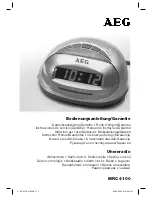
Figure 3-9: Reflector Mounting Guidelines
10° maximum
Reflector
Optical Line of Sight
Figure 3-10: Reflector Mounting Guidelines
Mounting the Imager
The transmitter/receiver unit can be surface mounted, Cable knock- outs are
provided top, bottom and back in the back box.
The transmitter/receiver unit may be mounted over a recessed junction box.
The cavity behind the detector is then used for routing of the wiring from the
junction box to the terminal blocks on the detector by drilling holes through the
detector’s back box.
The transmitter/receiver unit should be mounted to the wall such that the unit
covers the recessed junction box in the wall completely.
The transmitter/receiver unit can be mounted to the wall using the back box
pilot holes for the 4” junction box. The detector base has 6 pilot mounting
keyholes spread around the base, see Figure 3- 11. Any suitable number of
locations should be used to provide a secure mounting.
If the large knock out is not used, than use as a minimum this one and the most
left mounting hole to mount the detector. If the large knock-out is removed use
the left mounting hole and one top and one bottom mounting hole near to the
knock-out.
The outer housing of the beam detector is held to the base using three screws.
To mount the detector, you must remove the outer housing first.
Cable knock-outs
bottom
Cable knock-outs
top
Holes for the fixing
of the detector
Large knock-out
for 4” J-Box
Mounting holes
Figure 3-11: Mounting pilot holes
Mounting Considerations for Single
Ended Beam Detectors
There must be a permanent clear line of vision between the detector and the
reflector. Reflective objects must not be near the line of vision between the
detector and reflector. Reflective objects too near to the line of sight can
reflect the light beam from the transmitter to the receiver. If this occurs, the
detector will not be able to distinguish these reflections from those of the
reflector and the protected space will be compromised. Reflective objects
such as ductwork or windows should be a m/- 2° out of the center of
the beam path of the beam). In cases where reflective objects cannot be
avoided, the complete reflector blockage test can be used to determine if the
installation is acceptable.
For more information refer to section Testing and Determining the Sensitivity
of the Unit and Maintenance.
Light sources of extreme intensity such as sunlight and halogen lamps, if
directed at the receiver, can cause a dramatic signal change resulting in fault
signals. To prevent this problem direct sunlight into the transmitter/receiver
unit should be avoided. There should be a minimum of 10° between the
pathway of the light source and detector and the line of sight between detector
and reflector.
Operation of the detector through panes of glass should be avoided. Since
single ended beam detectors operate on a reflection principle, a pane of glass
perpendicular to the line of sight between the detector and the reflector can
reflect the light beam from the transmitter to the receiver. If the application
requires operation through glass, use the conventional dual ended imaging
smoke beam detector from the OSID family offering. These beams will
require a separate addressable module to connect to the loop.
Where high ceilings (more than 30 feet or 9.1 meters) are present additional
beam smoke detectors mounted at multiple heights may be required to detect
smoke at lower levels. For more information refer to section
Wiring Installation Guidelines
Always install all wiring in compliance with the National Electrical Codes,
and/or the applicable local codes, and any special requirements of the local
authority having jurisdiction. Proper wire gauges and suitable means for strain
relief should be used. The conductors used to connect beam smoke detectors to
control panels and accessory devices should be color- coded to reduce the
likelihood of wiring errors. Improper connections can prevent a system from
responding properly in the event of a fire.
Installation wire used for the beam detector shall be no smaller than 22 AWG
(1.0 mm
2
). For best system performance, all wiring should be twisted pair and
9
E56-6965-000


































